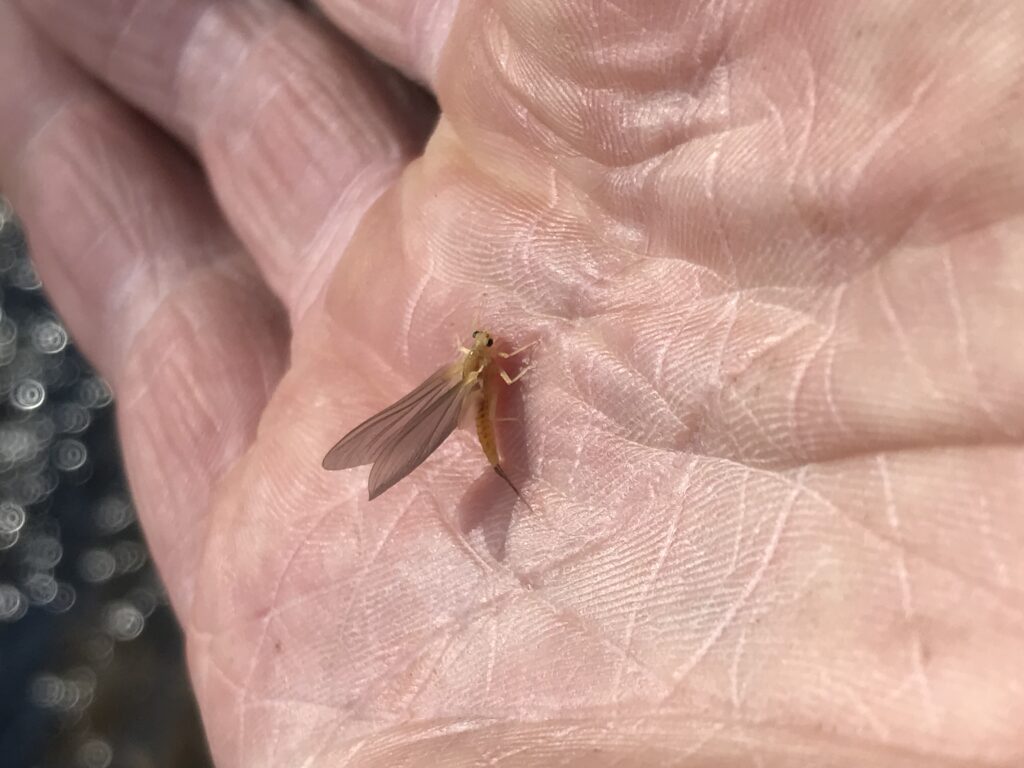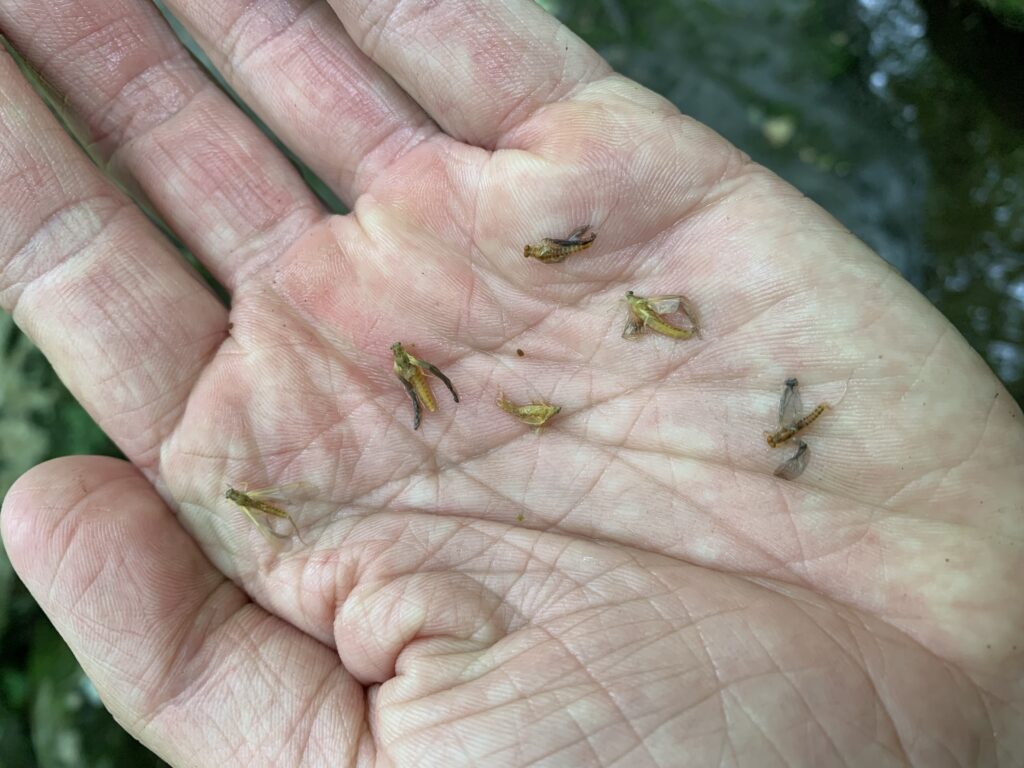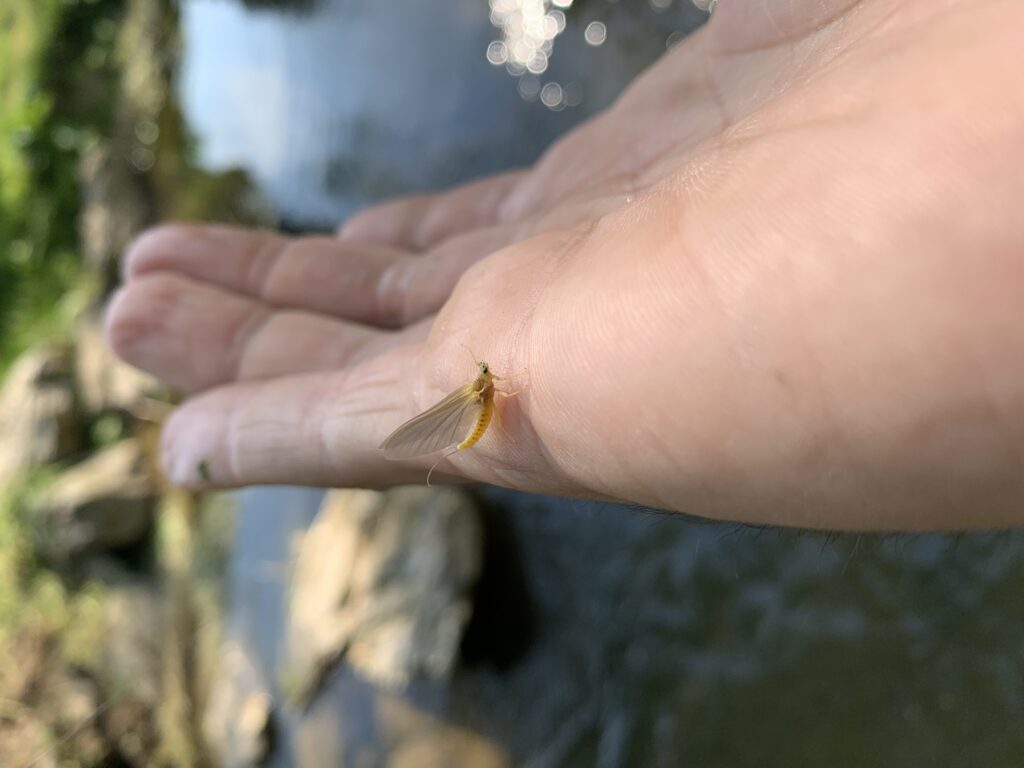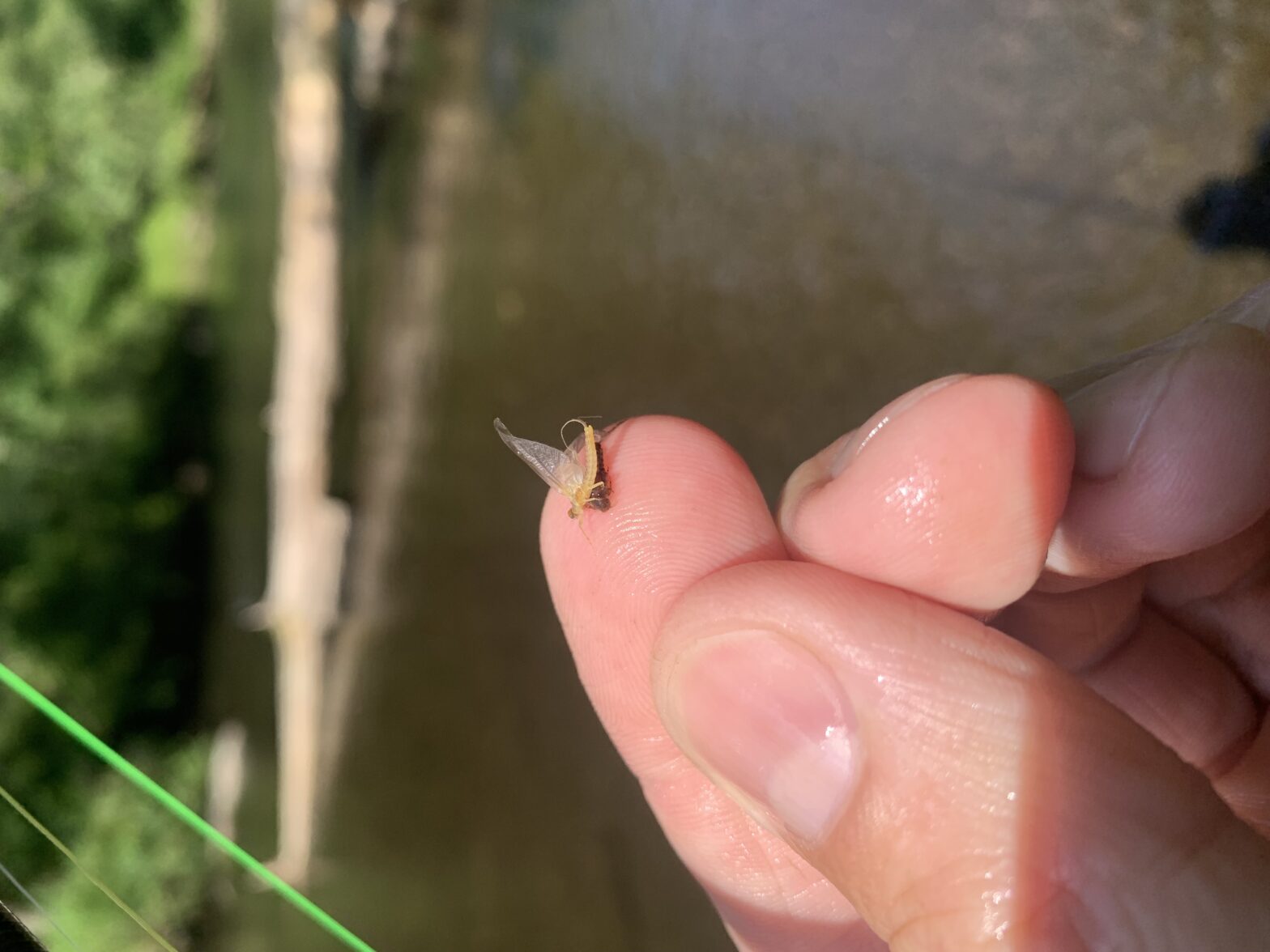
Fishing a size 16 sulphur dun dry-fly on the swing was how he taught himself how to fly fish. Like a wet fly on the swing, exactly like that actually – letting the current take control after casting across or quartering downstream. No floatant or desiccant powder, no mends, no real need to even consider the concept of buoyancy for that matter. He had no idea it was a dry-fly proper and he didn’t need to then, because it didn’t matter then.
Ivan recalled a polymer knot in his 7x nylon that was securing his fly to the business end of his glass 4 weight. He was unknowingly fishing a comparadun style dry-fly like a traditional downstream wet-fly and loving every second of it. Thoughts of it now results in LOL’s, and a bit of irony from a good laugh. Sometimes he looks down to what’s in his hands, instantly remembering that certain rods bring back happy memories. The fly-rod can be the material symbol of not so much a snapshot but rather a duration in time. The degree of which is dependent upon on the type of angler you are – to one angler those times may be confined to on the water only, or to another they may encompass whole sections of ones angling inspired life and beyond. Ivan falls to the latter on this spectrum… he loved that Orvis glass rod, and as beautifully as it casted it was because it was his first proper rod. He remembers people and places through it, conversations and meals. Storms and water conditions, quality of light, books read, a singular Hendrickson dun that looked purple in the warm sun that was burning off spring fog.. and even a few good fish. It was, and sometimes still is, paired with an old Hardy featherweight. It is a perfectly balanced tool, almost as good as a rod can be. At least Ivan had that going for him, his technical tackle choice was antithetical but the rod setup he somehow got very right in the beginning. By accident of course.
So that day he just went for it. He had formulated no real plan, no strategy other than to be there and in the moving water. Many of his sentiments back then hold true in his angling today, as well the lack of any real strategy, at times, other than being in it. Somehow that day he hooked a fish, even caught a brace by dusk. All were released and he was both elated as well as pretty proud of himself for getting into a couple; this was a new set of emotions at play here. I loved you at hello, i’m going to be a fly-fisher. He hooked a fish, it played him for a bit then bye.
The fish were keyed on rising emergers, sulphur flies of the Ephemerella genus, specifically to the last foot or so of water they must ascend before the hatching mayfly gets to the surface film. They were taking the flies at what Ivan later learned to be The critical moment, and it was on display that day. He very fortunately recognized this in real time – the fish eating his fly completely downstream of himself as it was hanging in the current… rising in the current. To the fish his fake fly looked just enough like the real fly that’s precariously on its way to briefly share our atmosphere. He couldn’t believe he caught a fish on his first outing. And as night follows day – right at that very thought, as sweet success was fully forming in his head – it was gone. Fish off, thoughts of angling-triumph, vanished… his curvy glass beauty of a rod returning to its proper owner not a fish, but nothing more than a very fish-less fly that was considered very alive and fishy a few moments prior.

Digressions:
This process of premature excitement followed by the recognition of such, and then immediate loss is still a self admitted occurrence in Ivans angling. Actually the avoidance of this is the common connection – the more frequent of occurrences I suppose. “HA avoid your damn thinking all the time.” He hears himself say. “I talk so much because otherwise I would have to listen to myself talk in my head all the time, but I digress.” Actually He doesn’t really even talk much. But now in his present angling pursuits of streamcraft, when he hooks certain fish and with it the inevitability of excitement that the larger or more difficult ones induce, Ivan very purposely thinks of his mind as being a literal void where no fishing outcomes sway into positive or negative territory. He gets out of his head and forces himself in to problem solving mode because, for one, he is an idiot and does not carry a net, and if you want to know the truth it’s mostly because Tom McGuane said he doesn’t carry one either somewhere in The Longest Silence, but I digress. As soon as he starts thinking “I may land this big mouse eater of a brown trout” or “that regally beautiful 8” broken-line brook trout” or “a trapeze artist of a rainbow trout” or anything remotely resembling the thought of potential anatomical metrics ….the fish is gone. It seems as if by design. He handicaps himself somehow, you know on purpose.
End of digressions:
Since swinging flies was the only technique that earned him a bit of success in the beginning, he very naturally fell in love with it. Across stream and quartering downstream, he followed the fly with his rod tip to the moment critique. No other tactics mattered, his chances of catching fish at this time were all riding on the swing. It was the only tune he knew how to play. Starting erroneously with the dry-fly fished like a wet, then very thankfully moving to the wet fly (fished like a wet), and to swinging a nymph – yielded some confidence. Then the dead drift tactics came in to play. All Ivans initial endeavors were subaqueous, he never fished a dry-fly as a dry-fly until after almost year 2 of serious study. Subsequently this has slowly evolved to the mono-rig tight-line system which is where he currently stands today with his primary technique of practice. Ivan is a very evolving modern angler.
In actual practice and over many years this has developed in to a heightened sense of perception and proximity. A certain quality of feeling in the movement of the fly underwater when swimming/ flowing in the current is the ideal goal. And when that feeling really gets going, it can also be the time when the fish agree with us that we have something good going on and are fooled. Sometimes our offering only has to look right for a few seconds. Ivan strives and teaches the concept of spatial awareness. He has this constant way of recognizing patterns. “Awareness is probably the most important of factors that dictate the mass majority of subsequent actions astream, we do it, be aware of it” Fly-fishers like Ivan are reductionists. They take in the information on display, and reduce the outcomes and values to actions. They have a process, they know this, they follow it or sometimes be led by it. Observation and repetition. Over and over. Whatever style of fishing or technique, he focuses his energy like a laser on the way things feel. “When you observe a strike or rise to your fly by also hearing it as well as seeing it in your sighter – you’re on the right path.” Ivan would say abruptly astream, shattering our pleasant reverie into a flinch with his sometimes involuntary bursts of thinking outside his head. “Can I sharpen my senses to that degree, where it starts to break through the partition of touch and sight?” And a few moments after missing a fish at the break of some slow but deeper riffles: “I hear it, the telegraphing from fish to me?” When he starts speaking in questions… he’s talking to himself. But I heard it. I hear it.
By Sean Eagan
Winter 2022

